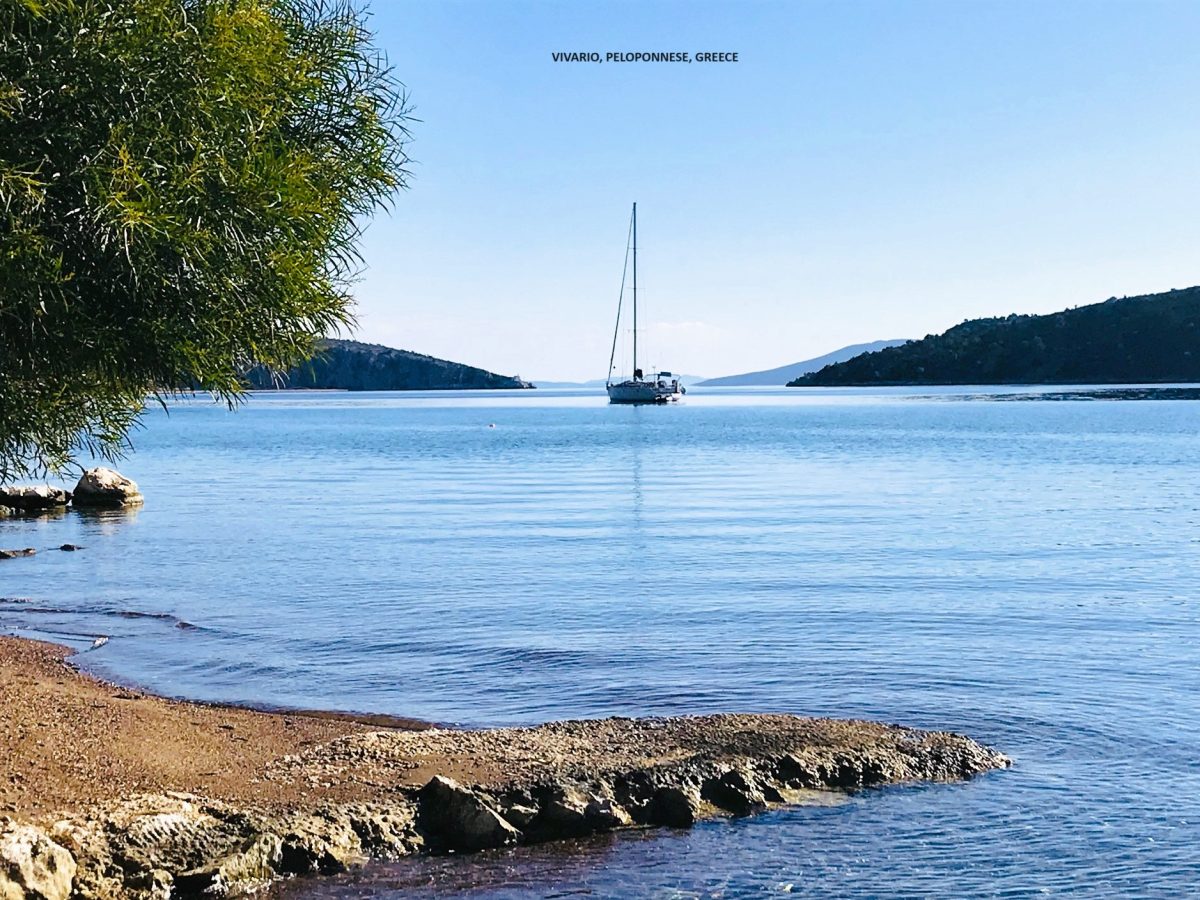And so to Bacharach on the Rhein. We were going to stay for a day, have a quick look around and then move on. That’s not how it panned out. We stayed four awesome days enjoying everything about the place; our campsite (we had a great spot overlooking the river); and the town itself (Bacharach now figures up there among our favourite places to have visited during our European Tours – Matera, Obidos, Vannes, etc); and most of all, the German people whom we met and talked to during our stay (locals and holidaymakers alike). Indeed, Vanya now sees Germany in a totally different and much more positive light than when we toured Bavaria and this is due largely to the German staff and customers of the Kurpfalzische Munze bar.
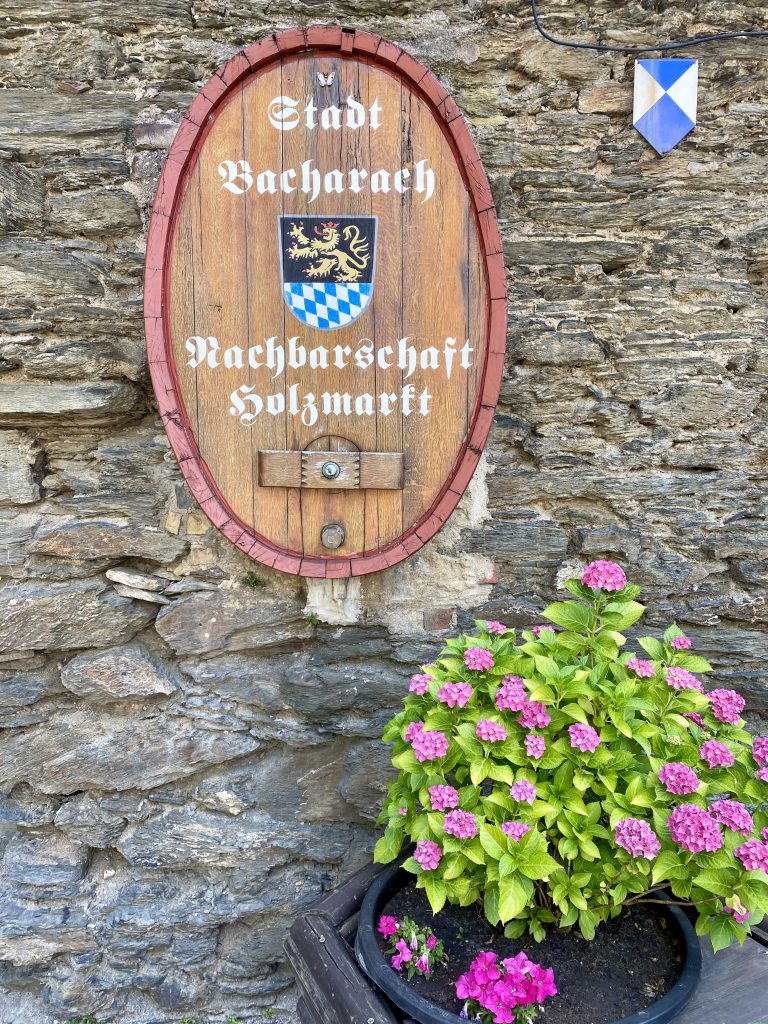
Bacharach is picturesque little town of less than 2,000 people on the left bank of a scenic stretch of the Upper Middle Rhine Valley some 50km south of Koblenz. It started life as a wine trading and shipping station in the middle ages. We visited a number of towns in the area during our stay but none were as pretty as Bacharach. You don’t need to take just my word for it. The great French novelist Victor Hugo, who visited the town in 1842, was moved to describe Bacharach as one of the world’s prettiest towns.
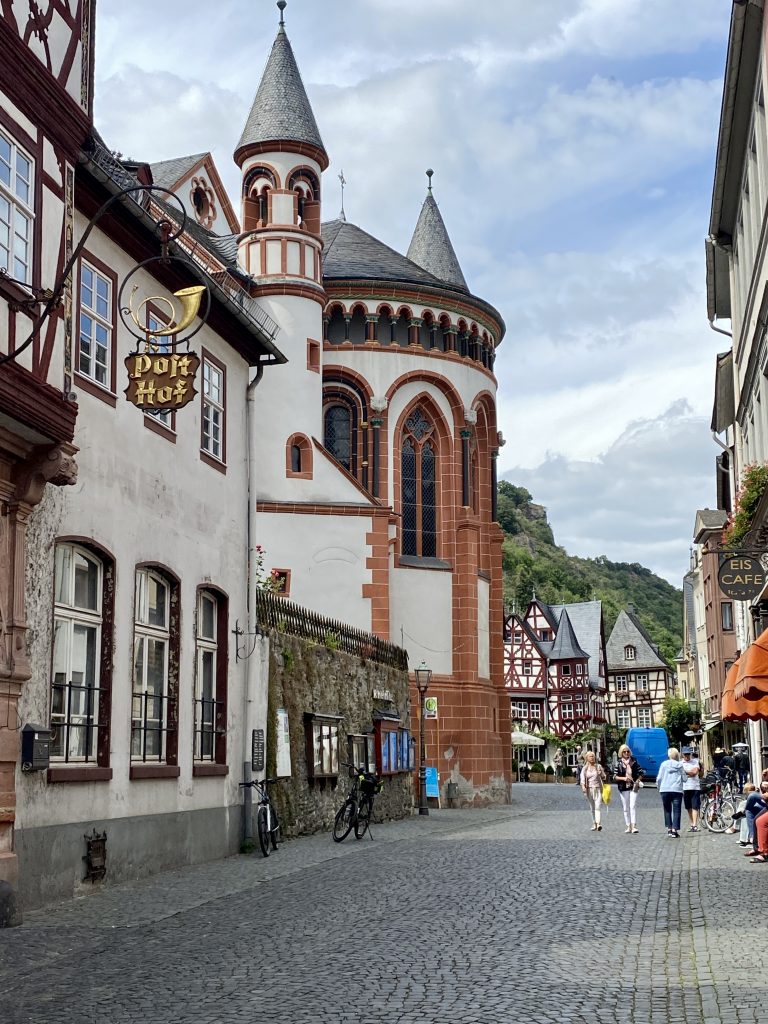
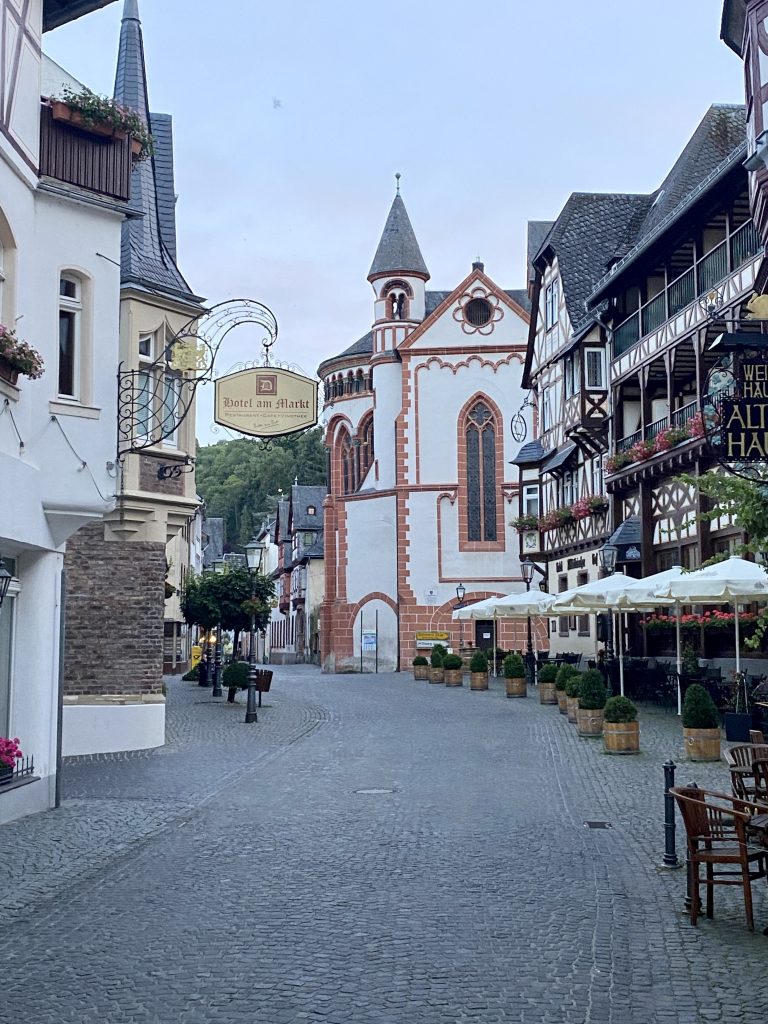
There are two main thoroughfares through the town, the Oberstrasse and the Langstrasse both of which run parallel with the river. They each have narrow cobblestone streets and half timbered houses many of which date back to the 15th century. The oldest house in Bacharach, on Oberstrasse, dates back to 1368 and has been renamed Altes Haus (Old House). Oberstrasse contains most of the town’s principal buildings (the church, the town hall, hotels, bars and shops, etc) while Langstrasse, closest to the river, is now largely residential.
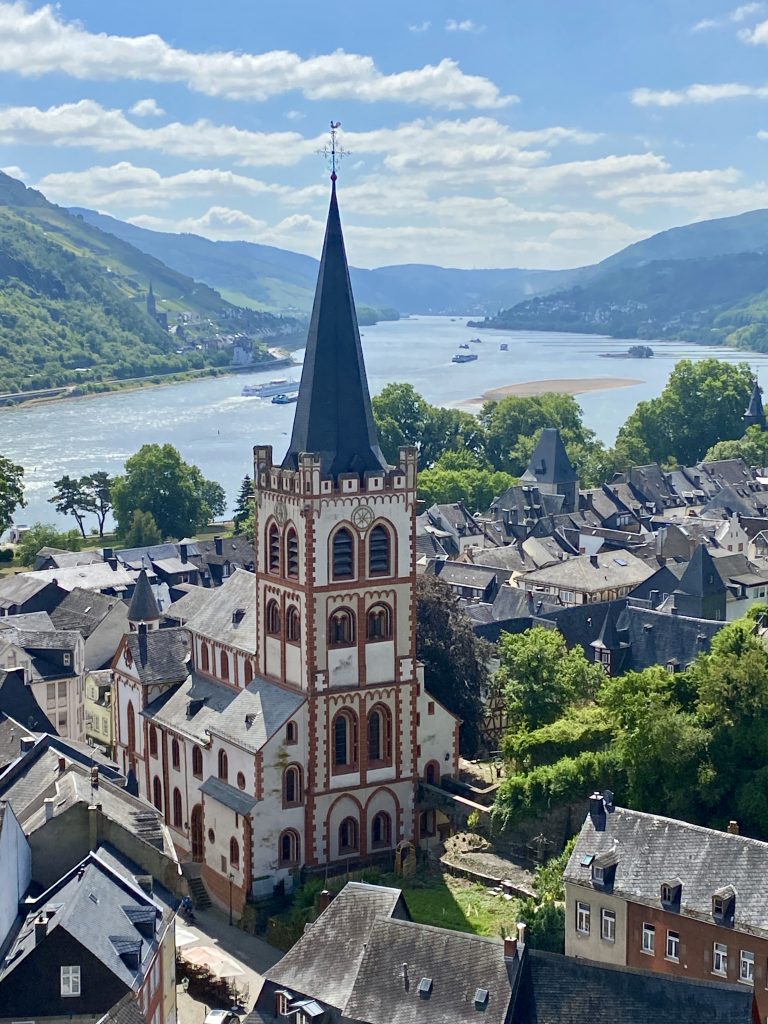
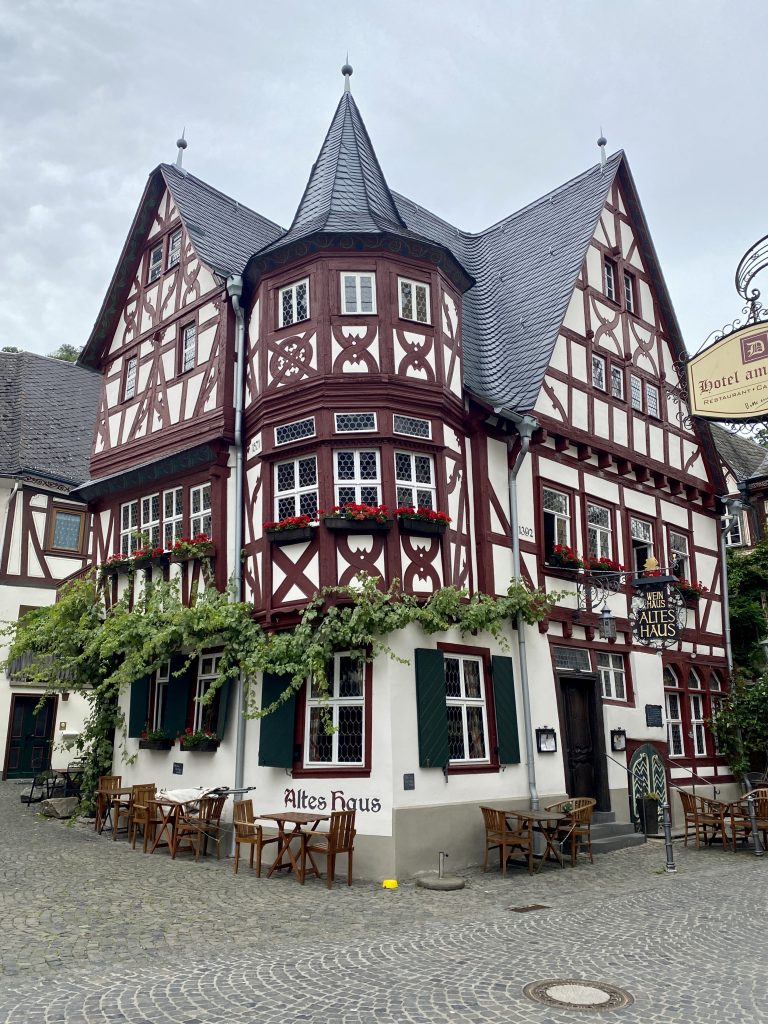
It is believed the town’s name is derived from the Roman god of wine and revelry, Bacchus, and certainly this area has long been associated with wine production, particularly white wines. The hillsides around Bacharach are rich with vineyards. We got to sample quite a few Riesling wines whilst in the area.
Most visitors to the town will sample the region’s Riesling in a local Weingut and two in the very centre of the town which came recommended are Fritz Bastian’s Weingut zum Gruner Baum and Weingut Toni Just Hahnehhof. Each appears to offer good value tasting sessions. However, whilst in Bacharach, we chose to sample the local wines (including some by Fritz Bastian and Toni Just) in the less formal setting of the town’s bars and hotels where we could meet and talk with some of the locals. It is more expensive this way and we do perhaps miss out on some inside information about the wine from the wine producers themselves but, there’s no better way to enjoy the stuff. The atmosphere in a welcoming friendly bar such as the Kurpfalzische Munze, drinking what the locals drink, and meeting and talking to them easily surpasses what sometimes can be sterile wine tasting session with other tourists.

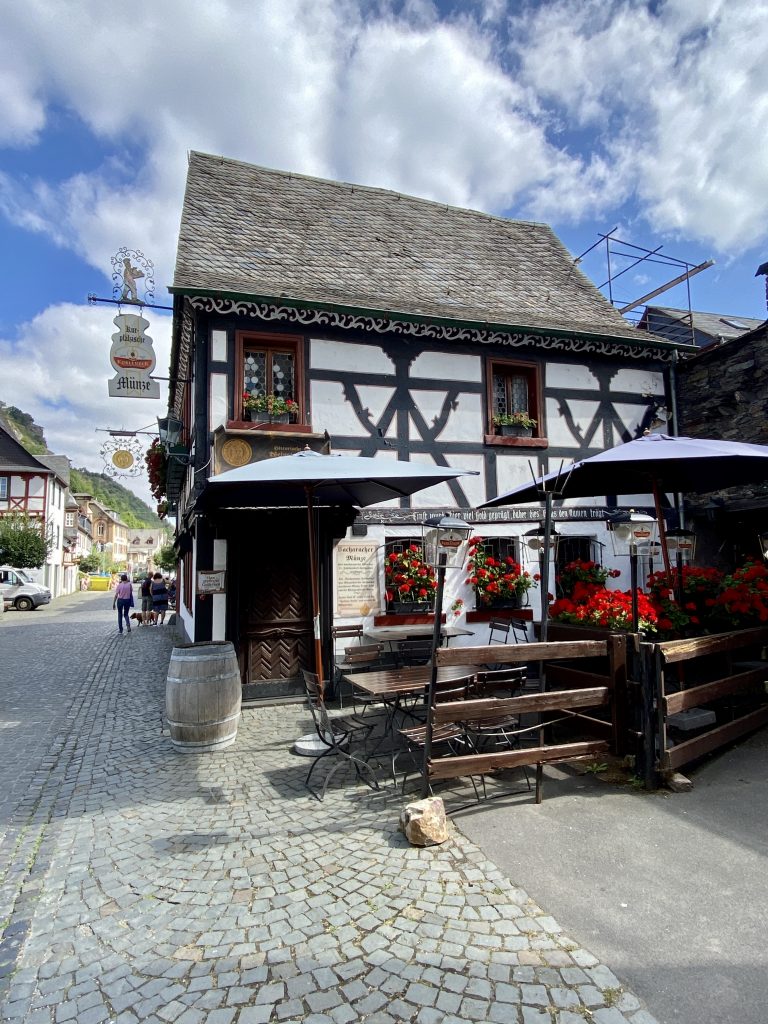
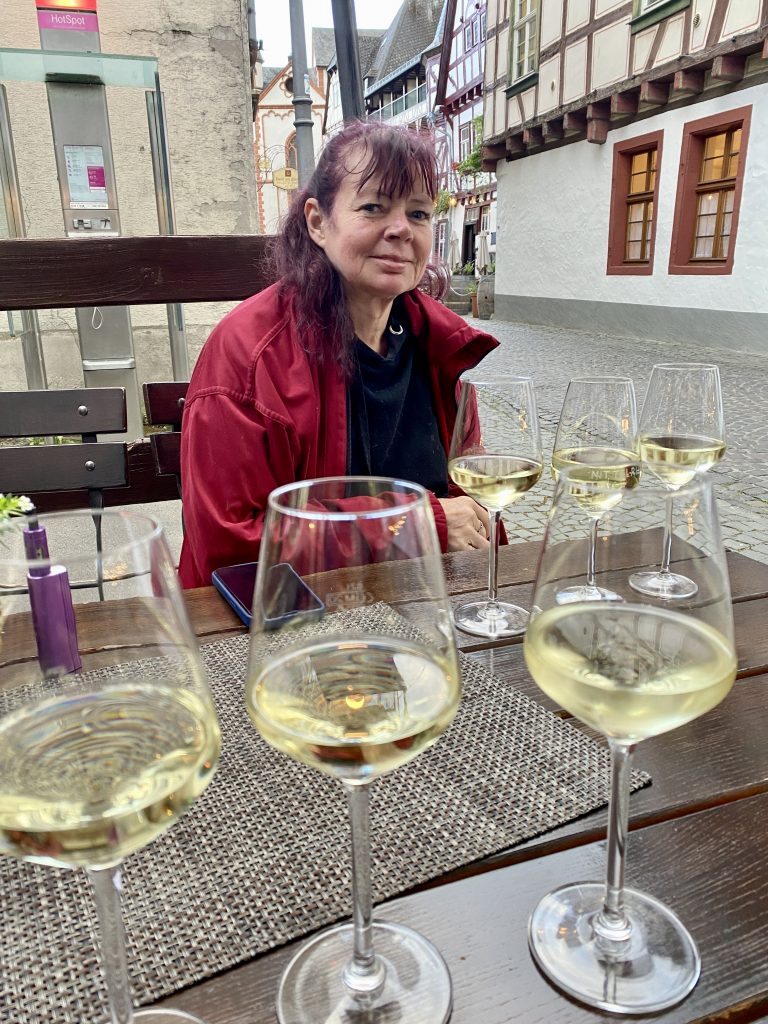
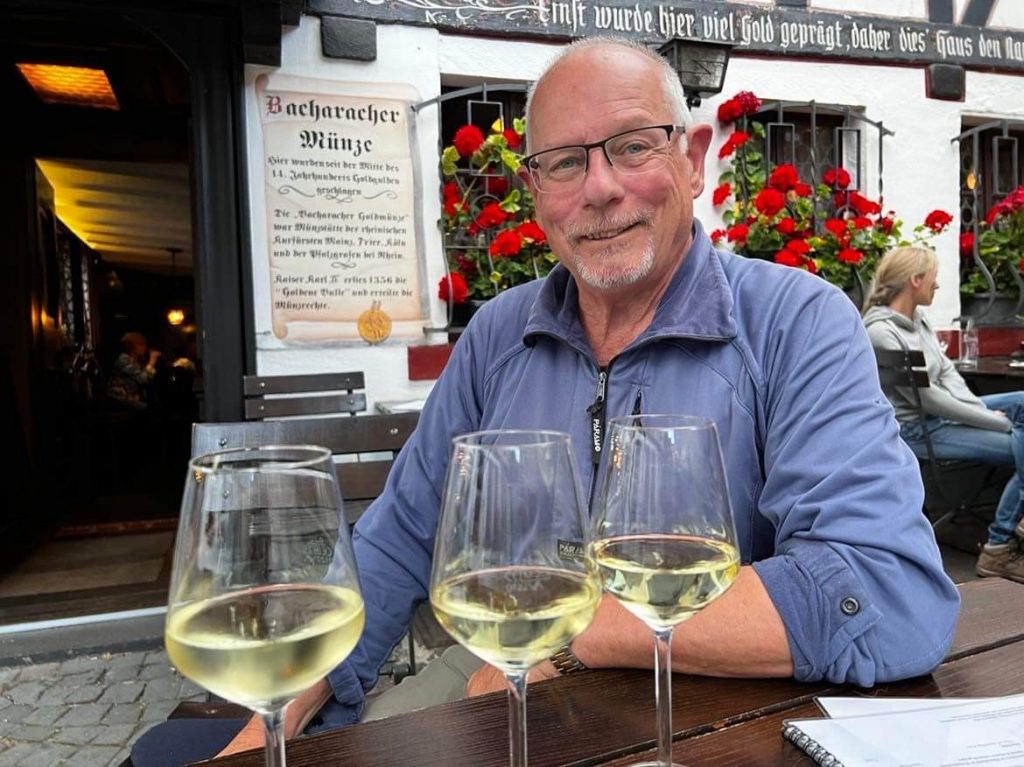
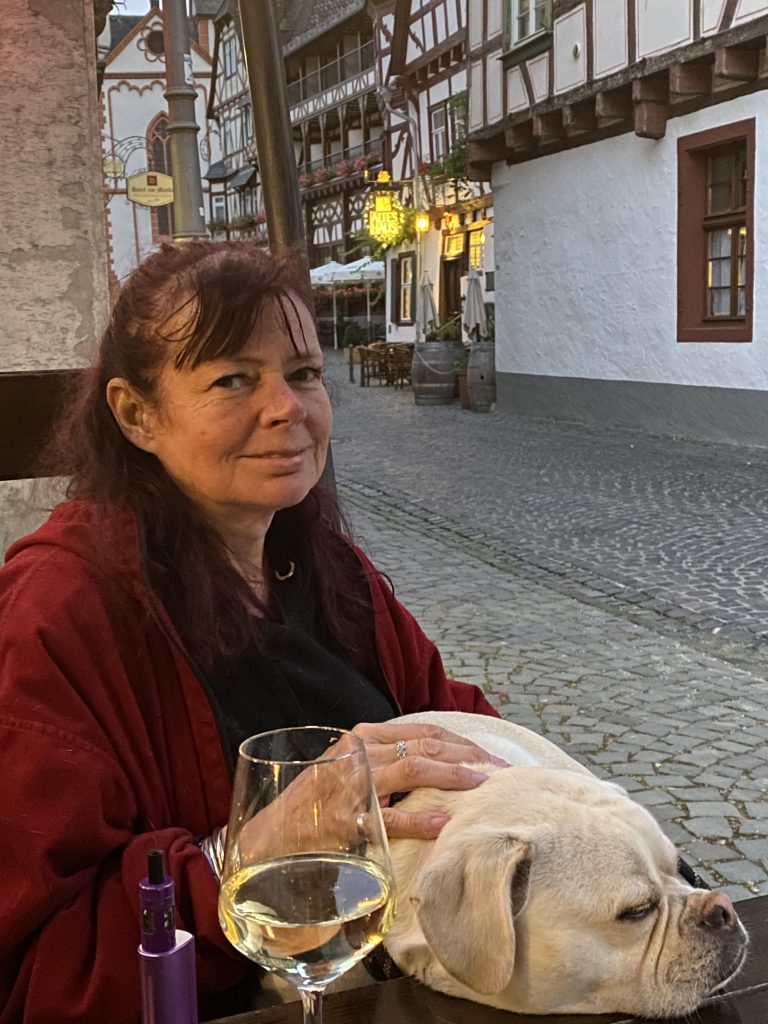
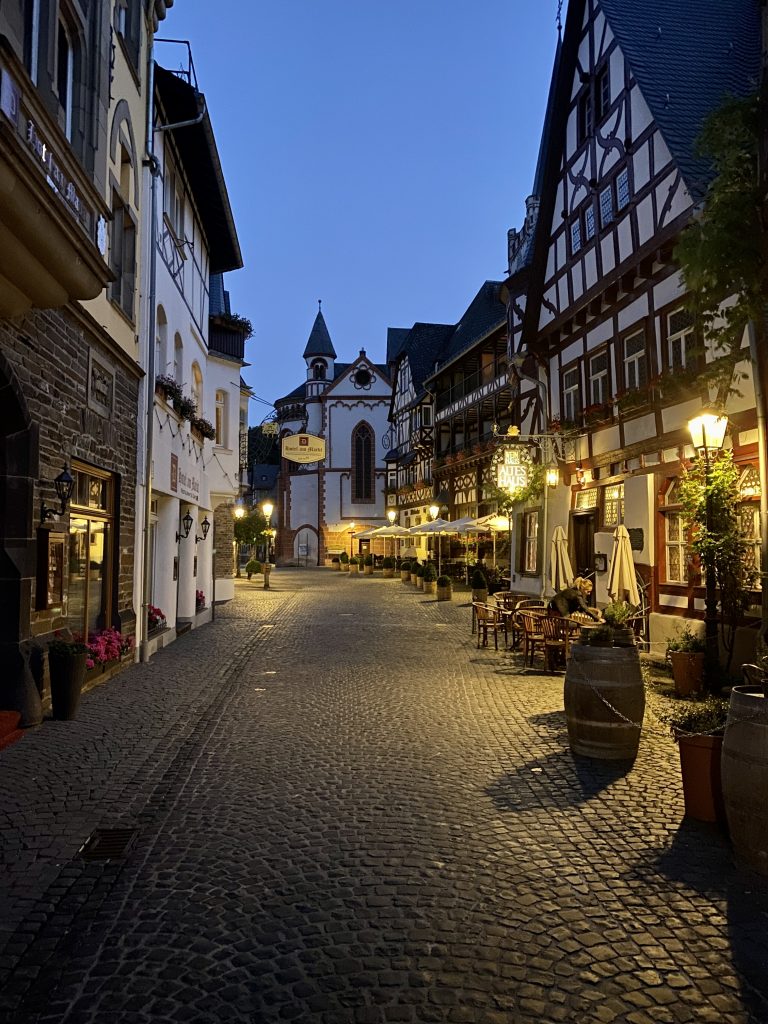
A little more about the town. Towering above Bacherach is the Burg Stahleck castle (520m above sea level) which was destroyed in the late 17th century (some say by an invading French army and others say it was on the orders of the Archbishop of Cologne) but, it was rebuilt in the 20th century and is now a Youth Hostel and open to the public. You can take tea and cakes on the castle terraces whilst taking in some fine views down the Rhine. Having said that I think that the Postenturm, which is not as high and easier to get to from the town centre, makes for a better viewing point.


Just below the Burg Stahleck is the Wernerkapelle ruin, originally a pilgramage church built between 1289 and 1430. This ruin has a particularly dark history. It started with the murder of a teenage boy, Werner of Oberwesselin, in 1287. He worked for a Jewish family and, with anti-Semitism rife in the area at that time, the Jews were blamed for the crime. Retaliation saw some two dozen local Jews killed. Rubbing salt into the wound, the catholic church subsequently made Werner a saint and the Wernerkapelle was commisioned.

Sadly, Anti-Semitism has been rife throughout Europe for most of the last two thousand years. Bacharach was again touched by it once some 90+ years ago after the Nazis took power in Germany. This was brought home to me during our stay in Bacharach when, whilst walking along Langstrasse, I chanced upon some Stolpersteine (stumbling stones) in the names of Willi and Emma Keller. Stolpersteine are small brass plates inscribed with the names of individuals who were victims of Nazi persecution. They are usually built into the pavement outside the building where the individuals last lived and are intended to keep alive the memory of the ordinary people (my words). Willi and Emma Keller were brother and sister who lived at 43 Langstrasse in Bacharach before being seized and deported to Theresienstadt concentration camp in 1942. They didn’t survive Theresienstadt. The stolpersteine are part of a pan-European commemorative ‘art’ project and an increasing number are being placed throughout many countries in Europe. I have previously seen them in Hungary, Nederland and Germany. There are others in Bacharach (and we saw them in some other towns we visited in this part of the world) but, credit to Bacharach and the other towns for supporting this initiative. Many towns simply will not tolerate them.
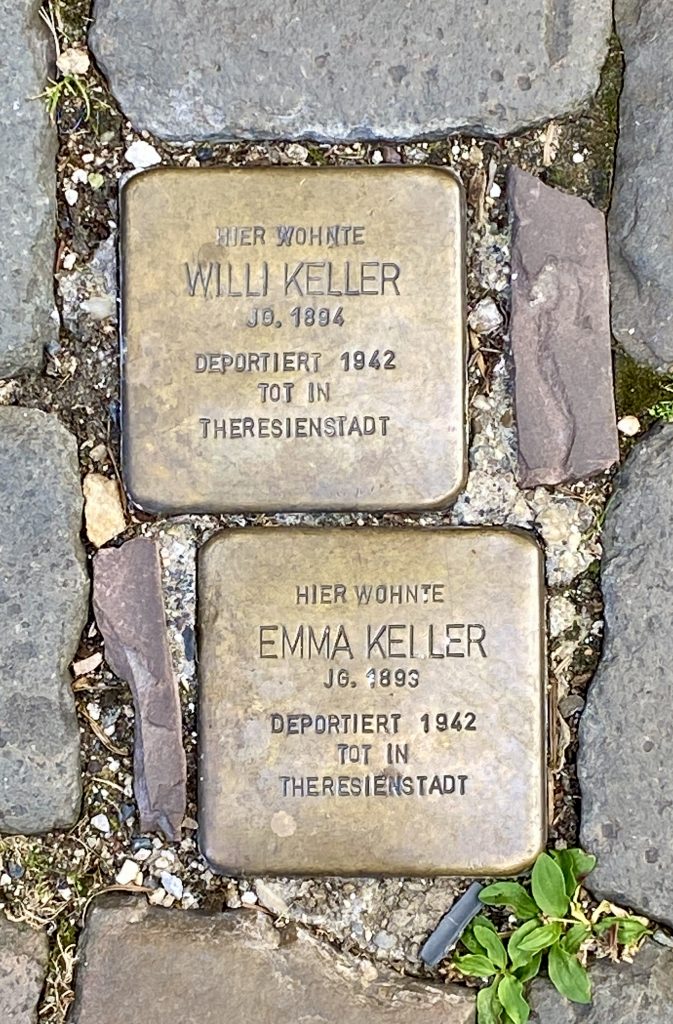
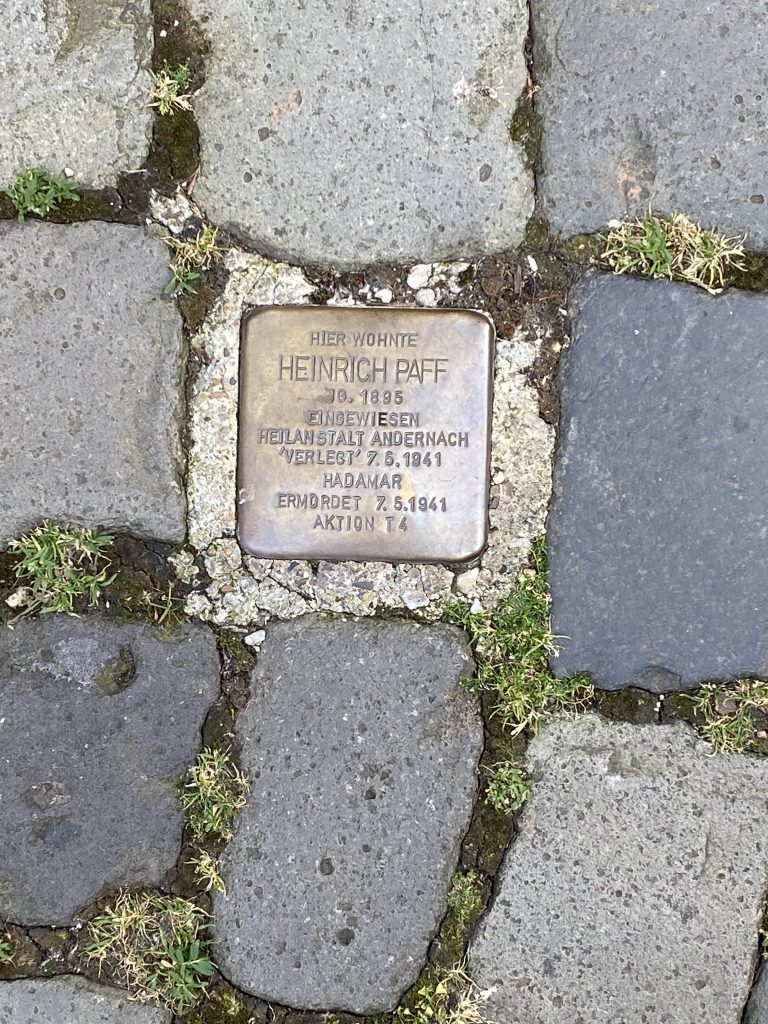

I simply cannot finish this blog on such a sad note. A few more photos of a very pretty town:-
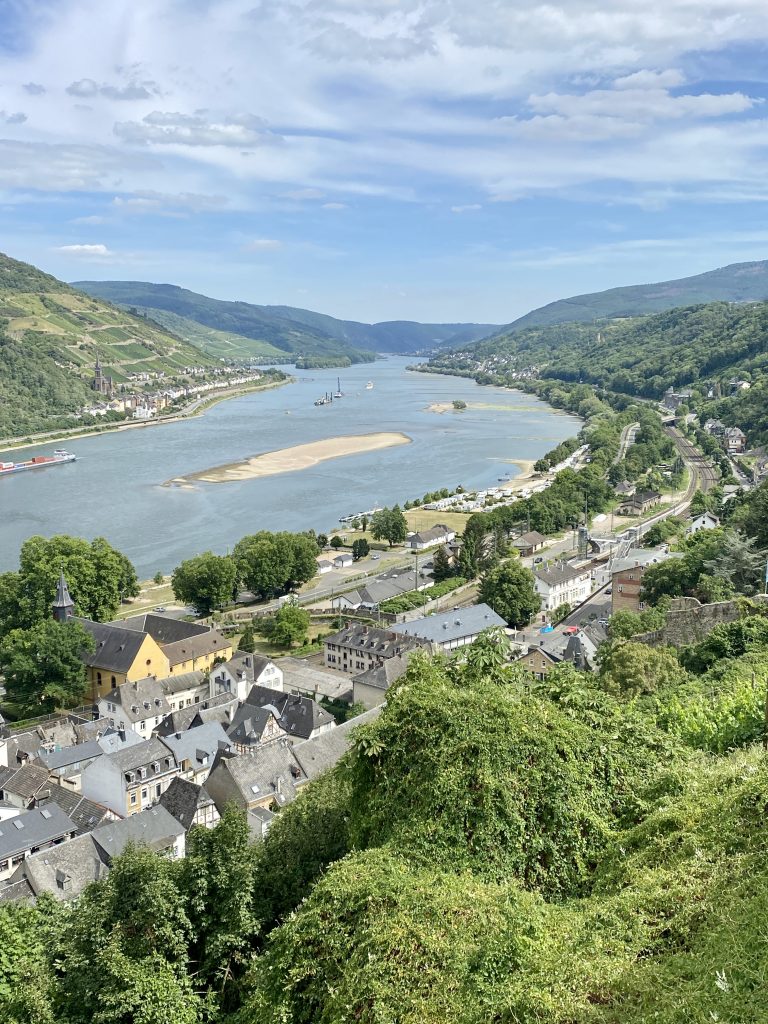
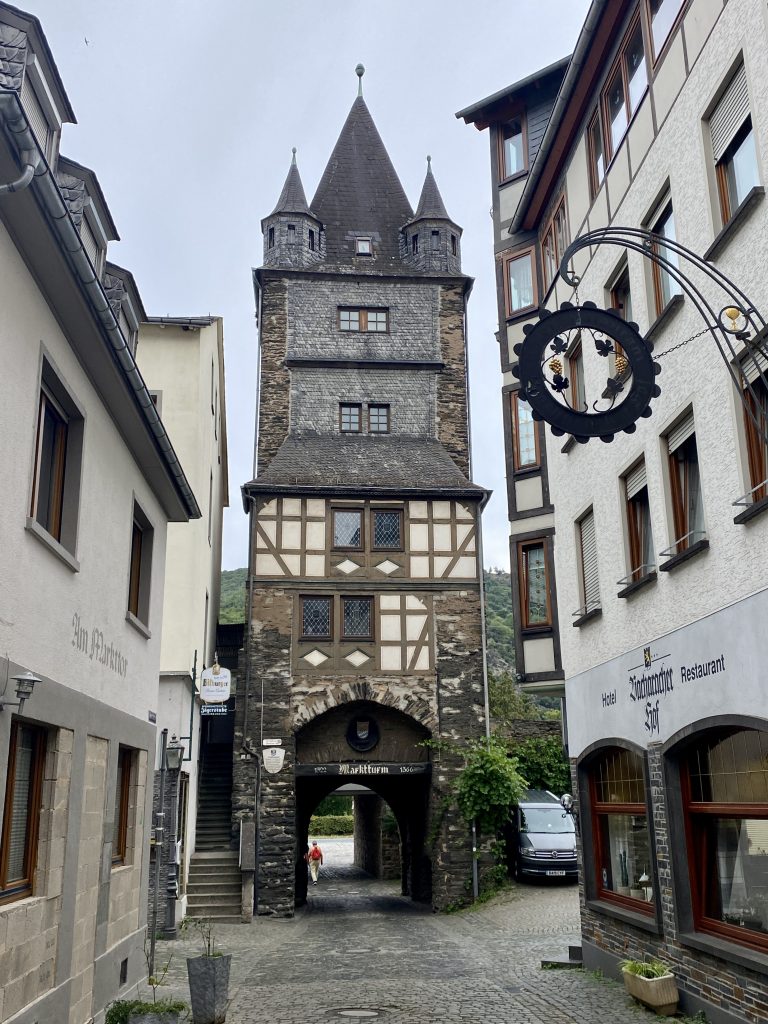


In this area it is almost de rigeur to take a cruise either up or down the Rhine. We did both; first of all heading up river to Rudesheim on the right bank of the Rhein and then, two days later, down river to Sankt Goar on the left bank and Sankt Goarhausen on the right. Those boat trips are covered briefly in separate blogs.


